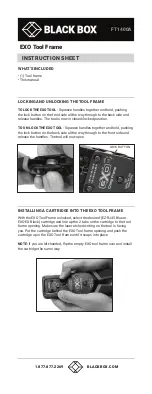
Table shown tilted and swivelled
about the column
Fig. 8
Table Support
Locking Handle
Fig. 7
Table Tilt Scale
Fig. 9
1. Table.
The table may be raised, lowered or swivelled about the
column, by slackening off the Table Support Locking Handle,
(Fig.7), adjusting accordingly, and re-tightening the handle.
It may also be tilted by loosening the M16 Screw, which
secures the table to its’ mounting, beneath the table, tilting
to the required position and re-tightening the Screw.
SETTINGS and ADJUSTMENTS
A scale is provided on the
table mounting, measured
in degrees, to assist in setting
the required angle, (Fig.9)
For all normal operations,
the table should be set to 0°.
To check to ensure the table
is entirely square to the drill
bit, insert a piece of straight
round bar in the chuck,
place a square on the table and bring it up to the round
bar. Adjust the table tilt if necessary so that the table is
correctly aligned.
2. Spindle Depth.
(All references are to Fig. 10)
Located around the spindle feed shaft is a Depth Stop
Collar, carrying a graduated scale (A). The collar is
capable of turning about the shaft, and may be locked
in place by a Locking Screw (B).
The graduations are imperial (inches) and metric (mm).
To set a drilling depth:
1.
With the power OFF, lower the drill bit so that it contacts
the work, and hold in that position.
2.
Slacken off the locking screw, and turn the collar so
that the measurement for the depth of hole required is
in line with the pointer (C). Lock the collar in this position
with the locking screw.
The drill is now set to drill holes to your pre-determined depth,
from that particular start point.
i.e. Providing the surface of your workpiece is flat and level,
you may drill a series of holes, each to the same depth.
Fig.10
11
Summary of Contents for METALWORKER CDP201B
Page 1: ...0307 SERIAL No ...
Page 18: ...HEAD ASSEMBLY 18 ...







































